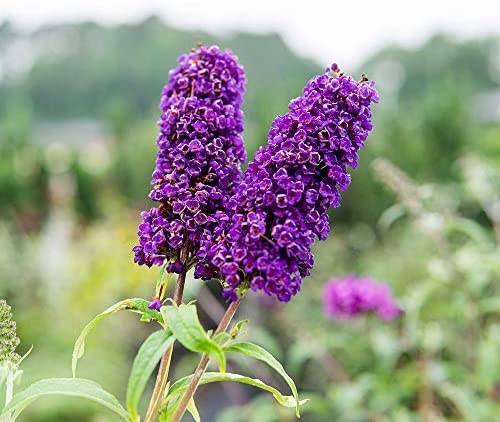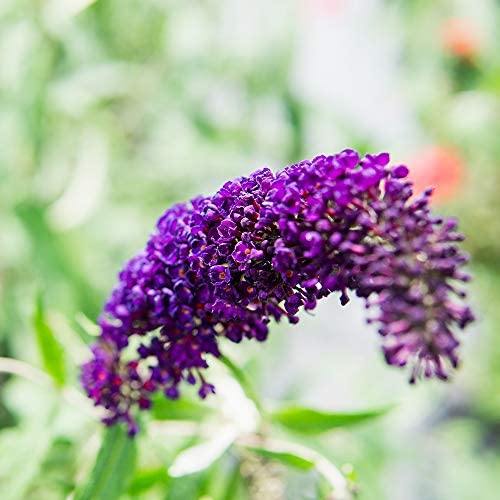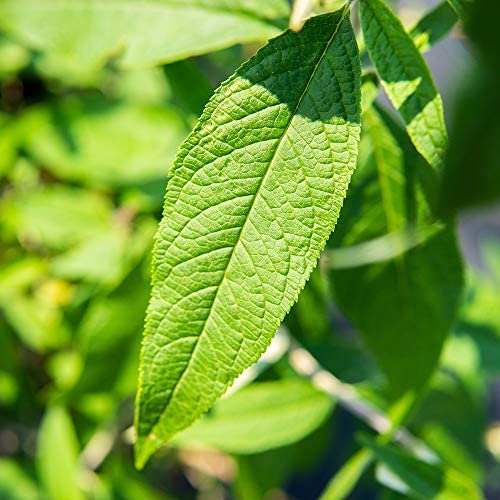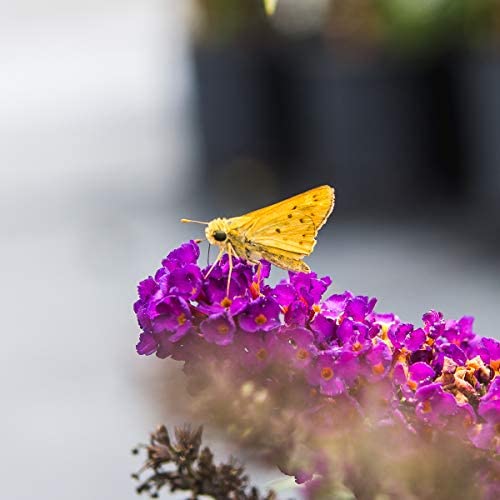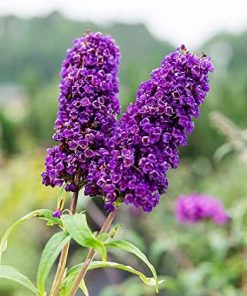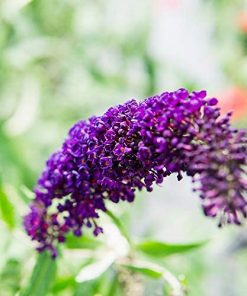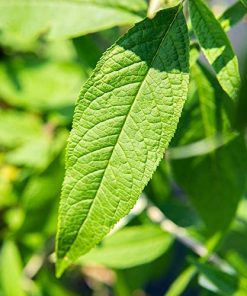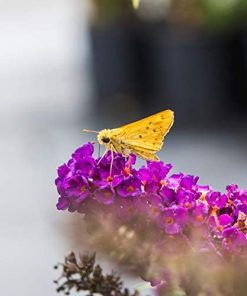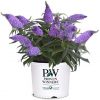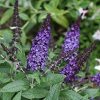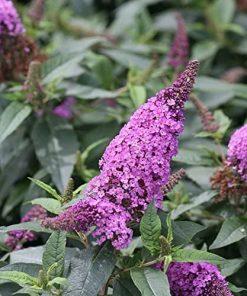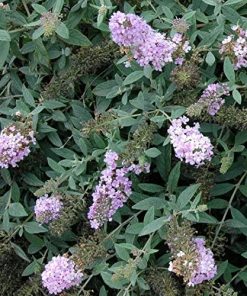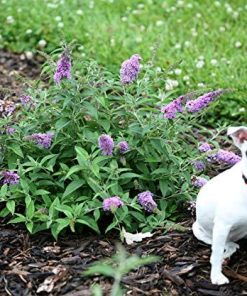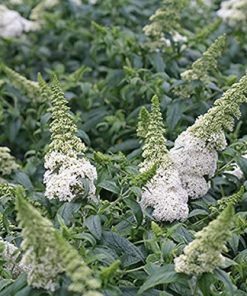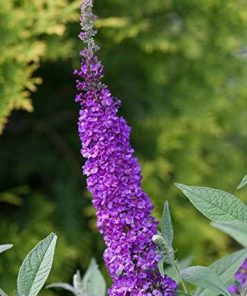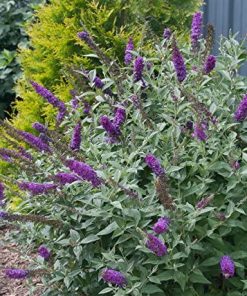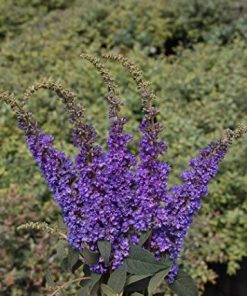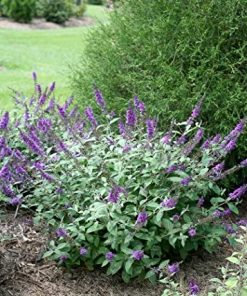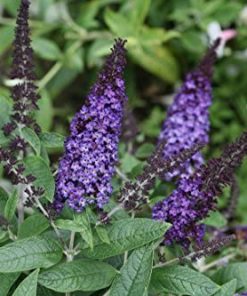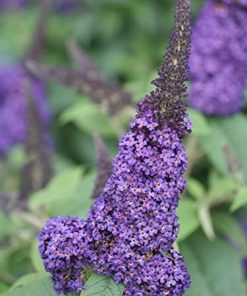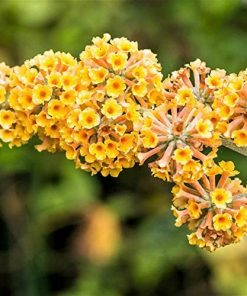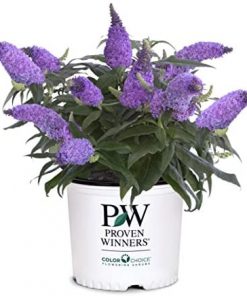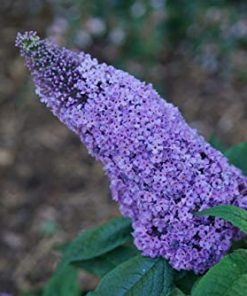The Black Knight Butterfly Bush (Buddleia davidii ‘Black Knight’) is a popular cultivar of the butterfly bush that is known for its striking dark purple to almost black flowers. This deciduous shrub is prized in gardens for its long blooming season and its ability to attract butterflies and other pollinators.
Here are some of its key characteristics:
– **Flowers:** The ‘Black Knight’ has dense, cone-shaped clusters of tiny, tubular flowers. The blooms are very dark, with a deep purple hue that can appear almost black, especially in the bud stage.
– **Foliage:** It has lance-shaped leaves that are gray-green to silver-green in color, which contrasts nicely with the dark flowers.
– **Size:** This cultivar typically grows to be about 6 to 8 feet tall and 4 to 6 feet wide, making it a medium-sized shrub that is suitable for use as a background plant or as part of a mixed border.
– **Blooming Season:** The blooming period is quite lengthy, often starting in early summer and continuing until the first frost. This long blooming season is one of the reasons it’s such a favorite among gardeners.
– **Attracting Wildlife:** As the name suggests, butterfly bushes are excellent at attracting butterflies. They also attract other beneficial pollinators like bees and hummingbirds.
– **Care:** Butterfly bushes are generally easy to care for. They prefer full sun and well-draining soil. They are drought-tolerant once established and can be pruned back hard in late winter or early spring to maintain their shape and encourage flowering.
– **Hardiness:** The ‘Black Knight’ is considered hardy and can survive in USDA hardiness zones 5 through 9, though it may die back to the ground in the colder parts of this range and return in spring.
While butterfly bushes are beloved for their beauty and ability to attract wildlife, it’s worth noting that in some areas, Buddleia species have become invasive. They can spread beyond garden settings into natural areas where they may compete with native plants. Always check local regulations and consider the ecological impact before planting.
